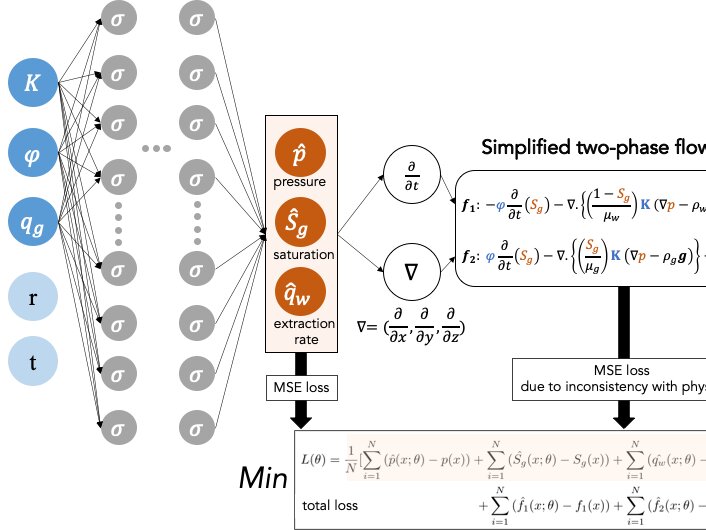Pumping carbon dioxide underground may help combat the warming of the atmosphere but finding appropriate underground sites that could safely serve as reservoirs can be complicated.
To address this complexity, a Penn State-led research team combined an artificial intelligence technique with an understanding of physics to develop an efficient, cost-effective predictive modeling approach. They published their results in the Journal of Contaminant Hydrology.
“Storing carbon dioxide underground is one environmentally friendly way to reduce the amount of the gas in the atmosphere,” said Parisa Shokouhi, associate professor of engineering science and mechanics. “But the geological structure can be unfavorable to carbon dioxide injection. For example, if pressure surpasses a certain limit, there can be fractures, gas leakage and earthquakes, and if you over-inject with too much gas, you can have similar issues.”
Numerical simulations, complex and detailed models used to help understand a problem that can’t be easily defined otherwise, have been used to predict a potential site’s response to carbon dioxide injection. These simulations, however, can be remarkably expensive and time-consuming to run. And for every new site being explored as a storage site candidate, a new numerical simulation must be run anew.
To avoid the cost and time commitment required with numerical simulation, the research team trained deep learning algorithms to make accurate predictions across a variety of scenarios. Learning from data produced by simulated scenarios of carbon dioxide in a 7,500-foot-deep reservoir, the algorithms were able to predict how carbon dioxide saturation and pressure would behave in new simulated systems.
The simulated training data approximate the performance of a system, from which the algorithms identify patterns they can use to make estimations on future behavior—but these patterns do not always obey the laws of physics. Although driven by data, the models can make inaccurate predictions for a system for many reasons, including inaccuracies in data. Limited training data may lead to estimations that are too specifically tailored to the dataset, a problem known as overfitting.
The researchers addressed this shortcoming by incorporating physics to refine the deep learning algorithms’ predictions, developing models constrained by fundamental physics principles, such as the natural movements of subterranean liquids or for the law of conservation of mass. When physics-based discrepancies occurred, the team added a penalty to help the algorithm learn to correct the mistake.
This approach resulted in a model that was still less expensive and faster to use than a conventional numerical simulation, but more accurate than data-driven models and potentially more generalizable, according to Shokouhi.
“Using a physics-informed approach makes the model more versatile,” she said. “Using just a data-driven model would make the predictions very specific to one domain, but our method allows us to get very accurate results even if you use the model on a site it wasn’t trained on.”
The research could enable reliable prediction software for use by scientists or operators in the field. A user could make selections for different injection options and, depending on the machine used, view predictions of the carbon dioxide behavior in a matter of seconds.
“We were able to get very accurate and fast prediction models,” Shokouhi said. “One day, an operator or seismologist could use these models to be informed on how to make real-time, quick decisions about injecting carbon dioxide into the ground.”
More information:
Parisa Shokouhi et al, Physics-informed deep learning for prediction of CO2 storage site response, Journal of Contaminant Hydrology (2021). DOI: 10.1016/j.jconhyd.2021.103835
Provided by
Pennsylvania State University
Citation:
Physics-informed deep learning to assess carbon dioxide storage sites (2021, December 1)



